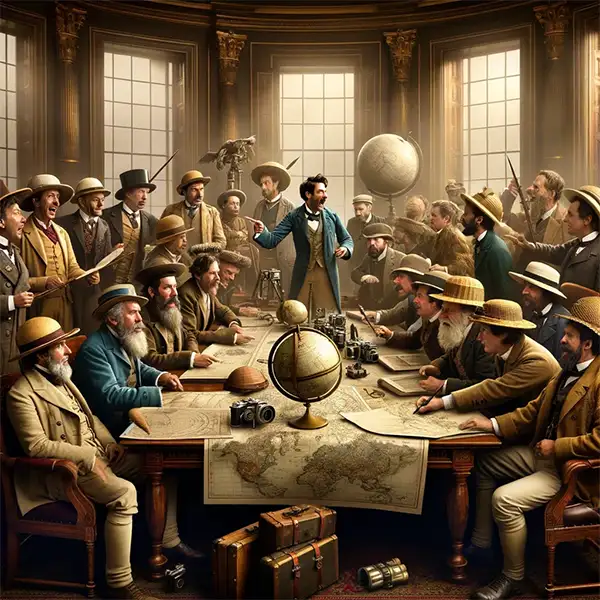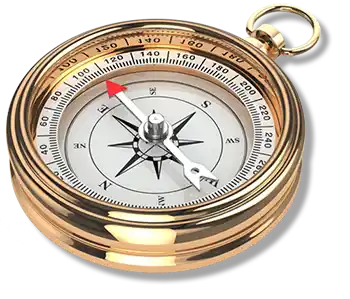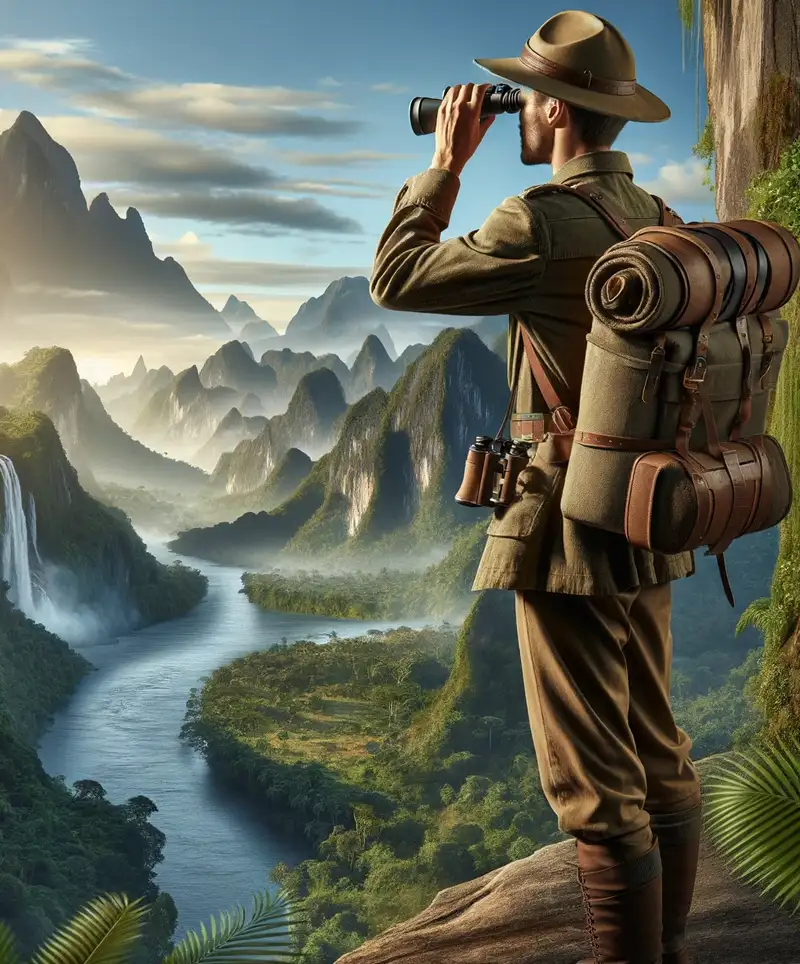Exploring a World of Wonders from Your Couch
National Geographic Day, landing every January 27th, is like a red-carpet event for all of us who prefer our safaris with a side of sofa. It’s the day we tip our hats (and remote controls) to the society that’s been sparking our curiosity and wanderlust since 1888—all while keeping us comfortably mosquito-bite-free.
You don’t need to be a seasoned explorer with the ability to distinguish between a cheetah and a leopard at a glance to enjoy this day. In fact, if you’ve ever found yourself narrating a nature documentary in your bathroom mirror or gotten into a heated debate over how to pronounce ‘Atacama Desert,’ then congratulations—you’re one of us! National Geographic Day is for everyone who loves the world in all its wild and weird glory, even if the closest they’ve come to roughing it is a hotel with no Wi-Fi.
 Because it’s the Day the World Got a Little Smaller
Because it’s the Day the World Got a Little Smaller
Why January 27th, you ask? That’s the day in 1888 when 33 intrepid explorers and scientists—clearly people who knew how to throw a party—gathered in Washington, D.C., and decided the world was too fascinating not to share. Thus, the National Geographic Society was born, inadvertently creating a legion of couch-bound explorers who travel the world one page flip at a time.
This day isn’t just about honoring those brave enough to scale Everest or dive with sharks. It’s about celebrating those of us who experience the world’s wonders with a bowl of popcorn in one hand and a TV remote in the other. We may never climb the Himalayas, but we can certainly appreciate them from the comfort of our living rooms, thank you very much.
From Coffee Table Staple to Global Icon
National Geographic’s transformation from a scholarly journal to a global icon is a journey as remarkable as the expeditions it has chronicled. In the beginning, it was a publication meant for the academically inclined, those few with an appetite for scientific exploration and discovery. But it didn’t take long for National Geographic to break out of that mold, much like an intrepid explorer smashing through a jungle with a machete—only, in this case, the jungle was the dense thicket of scholarly exclusivity.
As more people got their hands on those distinctive yellow-bordered issues, National Geographic became a beloved fixture in homes around the world. It wasn’t just a magazine; it was an invitation to dream, to wonder, and to believe that there was more to life than the daily grind. Those breathtaking photographs of remote landscapes and rare wildlife weren’t just pretty pictures—they were windows into worlds that most of us could only imagine. Each issue became a passport to adventure, delivering the exotic and the extraordinary right to your doorstep, no luggage required.
Over time, National Geographic didn’t just rest on its laurels (or its coffee tables). It embraced new media and evolved into a multi-platform powerhouse, expanding its reach beyond the printed page to documentaries, TV channels, and digital platforms. Suddenly, the adventure was available anytime, anywhere. Whether you were waiting in line at the grocery store or lounging on your couch, the wonders of the world were just a click away.
But what truly sets National Geographic apart is its ability to make the extraordinary accessible. It took subjects that were once the domain of scientists and explorers and brought them to the masses in a way that was engaging, educational, and above all, inspiring. It’s one thing to hear about the Great Barrier Reef in a classroom; it’s another to see it in vivid detail, to feel like you’re right there among the coral, thanks to a National Geographic documentary.
This shift from a niche publication to a global icon didn’t just happen overnight. It was the result of a relentless commitment to quality, to storytelling, and to showing the world in all its beauty and complexity. National Geographic didn’t just report on the world; it brought the world into our homes, our lives, and our hearts. And in doing so, it transformed from a coffee table staple into a symbol of exploration, education, and the enduring human spirit.
The Evolution of Armchair Exploration
Over the years, National Geographic has become much more than just a magazine—it’s a global multimedia empire. It's the grandparent of nature documentaries, the elder statesman of adventure storytelling, making us all feel like instant experts on subjects we previously knew nothing about. Ever watched a documentary and suddenly found yourself passionately discussing the mating habits of penguins or the mysteries of the ancient Maya? You can thank National Geographic for that.
But National Geographic doesn’t just show us the world—it nudges us to take care of it. Long before climate change became a trending topic, National Geographic was there, teaching us about conservation and cultural preservation. They’ve been waving the green flag before it was cool, making sure we understand that while climbing Everest might be a once-in-a-lifetime experience, recycling is something you can do every day.
 Celebrating National Geographic Day
Celebrating National Geographic Day
So how do you celebrate National Geographic Day? Start by trying to correctly pronounce 'Papua New Guinea' without looking it up (extra points if you don’t accidentally summon a demon in the process). Or maybe spend the day binge-watching documentaries, marveling at how a photographer captured that perfect shot of a snow leopard on the prowl. It’s a day to appreciate our planet’s mind-boggling diversity from the safety and comfort of our couches—because, let’s be honest, the only jungle most of us want to explore is the one on our streaming service homepage.
National Geographic Day isn’t just about a magazine or a society; it’s about the explorer in all of us. It reminds us that there’s a whole wide world out there, full of mystery, beauty, and yes, a few terrifying insects. So here’s to National Geographic—thanks for making us all feel like adventurers, even if our idea of ‘adventure’ involves nothing more strenuous than trying a new flavor of ice cream.
Please Share our Content






 Because it’s the Day the World Got a Little Smaller
Because it’s the Day the World Got a Little Smaller Celebrating National Geographic Day
Celebrating National Geographic Day








 "Sláinte!" is a traditional Irish expression used as a toast, equivalent to "Cheers!" in English.
"Sláinte!" is a traditional Irish expression used as a toast, equivalent to "Cheers!" in English.